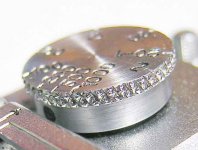greyelm
Malcolm
I've just received my first Leica which according to the serial number (212055) is a 1936 IIIa. It has been ?factory converted to flash sync under the accessory shoe but the shutter speeds only go up to 500 with 20-1 and T to 20 on the front dial.
I have read the IIIa has a speed of 1000, so could mine have had a replacement shutter speed mechanism fitted when the sync was installed?
I am looking forward to running a roll through it soon although I will have to use my FSU Jupiter-8 as I haven't got a Leitz lens yet.
I have read the IIIa has a speed of 1000, so could mine have had a replacement shutter speed mechanism fitted when the sync was installed?
I am looking forward to running a roll through it soon although I will have to use my FSU Jupiter-8 as I haven't got a Leitz lens yet.



